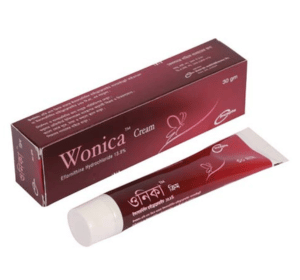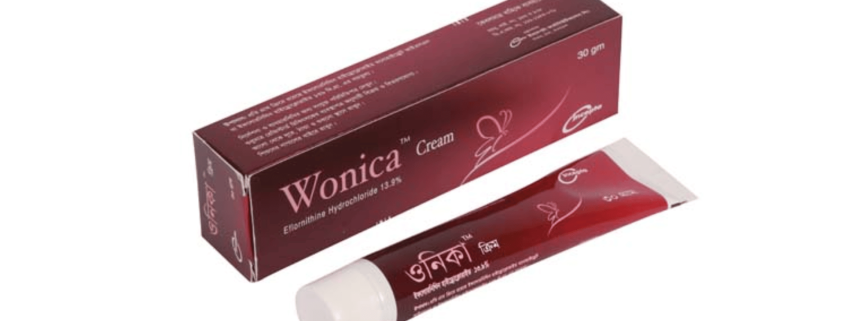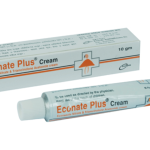Wonica Cream(Eflornithine Hydrochloride )

Therapeutic Group: Skin
Presentation
WonicaTM Cream: Each gram cream contains Eflornithine Hydrochloride Monohydrate INN equivalent to Eflornithine Hydrochloride 139 mg.
Description
It is postulated that topical Eflornithine Hydrochloride irreversibly inhibits skin ornithine decarboxylase (ODC) activity. This enzyme is necessary in the synthesis of polyamines. Animal data indicates that inhibition of ornithine decarboxylase inhibits cell division and synthetic functions, which affect the rate of hair growth. Eflornithine Hydrochloride cream, 13.9% has been shown to retard the rate of hair growth in non-clinical and clinical studies.
Indications
Eflornithine Hydrochloride cream, 13.9% is indicated for the reduction of unwanted facial hair in women. Eflornithine Hydrochloride has only been studied on the face and adjacent involved areas under the chin of affected individuals. Usage should be limited to these areas of involvement.
Dosage & Administration
Adults:
Apply a thin layer of Wonica cream, 13.9% to affected areas of the face and adjacent involved areas under the chin and rub in thoroughly. Do not wash treated area for at least 4 hours. Use twice daily at least 8 hours apart or as directed by a physician. The patient should continue to use hair removal techniques as needed in conjunction with WonicaTM (Wonica should be applied at least 5 minutes after hair removal). Cosmetics or sunscreens may be applied over treated areas after cream has dried.
Elderly:
No apparent differences in safety were observed between older patients and younger patients.
Children:
The safety and effectiveness of this product have not been established in pediatric patients less than 12 years of age.
Side Effects
Adverse events were primarily mild in intensity and generally resolved without medical treatment or discontinuation of WonicaTM. Side effects can include acne, barbae, pseudofolliculitis, stinging skin, headache, burning skin, dry skin, erythema (redness), pruritus (itching), tingling skin, dyspepsia, skin irritation, rash, alopecia, dizziness, folliculitis, hair ingrown, facial edema, anorexia, nausea, asthenia, vertigo
Precautions
For external use only. Transient stinging or burning may occur when applied to abraded or broken skin.
Use in Pregnancy & Lactation
Pregnancy: Pregnancy Category C.
Lactation: It is not known whether or not Eflornithine Hydrochloride is excreted in human milk. Caution should be exercised when Wonica is administered to a nursing woman.
Drug Interaction
It is not known whether WonicaTM has any interaction with other topically applied drug products.
Over Dose
Overdosage information with Wonica is unavailable. However, if very high topical doses (e.g., multiple tubes per day) or oral ingestion has been encountered (a 30 g tube contains 4.2 g of Eflornithine Hydrochloride), the patient should be monitored, and appropriate supportive measures should be administered as necessary.
Commercial Pack
Wonica Cream: Each tube contains 30 gm of cream.



